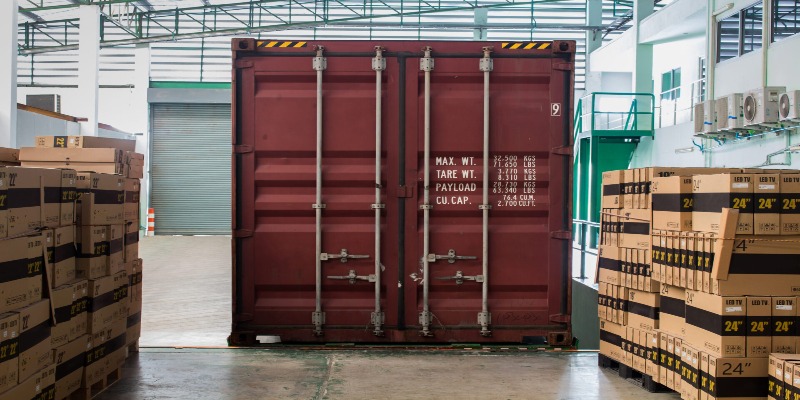Welcome to the fascinating world of electronics! At the heart of every device we can’t live without — from smartphones to electric vehicles — are semiconductors, those tiny components that control and manage electrical currents. But have you ever wondered how these critical parts make their way from manufacturers to product assembly lines around the world?
This journey is powered by semiconductor logistics solutions, a key but often overlooked cog in the electronics industry. Effective management of these logistics is not just beneficial; it’s essential for keeping the electronics market thriving and responsive to consumer needs. Let’s dive into why semiconductor logistics solutions are so crucial and how they impact the overall efficiency of the electronics supply chain.
Understanding Semiconductor Logistics Solutions

Definition of Semiconductor Logistics Solutions
Semiconductor logistics solutions encompass the comprehensive management of the flow of semiconductor components from manufacturers to assembly lines and finally to end consumers. This process includes transportation, warehousing, inventory management, and delivery.
Effective semiconductor logistics are crucial for managing the delicate and valuable semiconductor components, ensuring they are handled and transported with the utmost care to prevent damage and maintain supply chain efficiency.
Importance of Semiconductor Logistics in Electronics Industry Supply Chain Management
The electronics industry heavily depends on the timely and efficient delivery of semiconductor components. As the heart of most electronic devices, semiconductors are vital for the production of everything from smartphones to advanced medical devices.
Efficient logistics solutions ensure these essential parts are delivered without delays, which is critical in maintaining the pace of production lines and meeting consumer demands. Moreover, adept management of semiconductor logistics helps in minimizing costs, reducing waste, and improving overall supply chain flexibility.
Key Challenges in the Electronics Industry

Supply Chain Disruptions
Supply chain disruptions, often caused by geopolitical tensions, natural disasters, or pandemics, pose significant risks to the electronics industry. These disruptions can lead to shortages of critical semiconductor components, causing production delays and increasing costs. The reliance on just a few sources for critical materials further exacerbates the problem, highlighting the need for robust and responsive logistics solutions.
Just-in-Time Inventory Management
The Just-in-Time (JIT) inventory strategy, widely adopted in the electronics industry, reduces inventory costs but requires precise timing in logistic operations. Any misalignment in the delivery of semiconductors can halt entire production lines, leading to significant financial losses. Consequently, a sophisticated logistics strategy is essential to synchronize supply with production schedules accurately.
Global Supply Chain Complexities
Managing a global supply chain presents multiple complexities, including compliance with various international regulations and managing risks associated with currency fluctuations, political instability, and varying transportation infrastructure quality.
These factors demand a logistics strategy that is not only adaptable and robust but also equipped with a deep understanding of the global landscape to navigate these challenges effectively.
Role of Semiconductor Logistics in Mitigating Challenges
Streamlining Supply Chain Processes
Efficient logistics are critical in the semiconductor industry, primarily because it involves an intricate network of suppliers, manufacturers, and customers. Streamlining these processes ensures that semiconductors are manufactured, assembled, and delivered without unnecessary delays.
Improved logistics lead to faster production cycles, reducing the time to market for new devices and technologies. This is particularly vital in an industry where speed and efficiency are directly linked to profitability and market competitiveness.
Enhancing Visibility and Tracking
Visibility in logistics refers to the ability to track components at different stages of the supply chain in real-time. Effective tracking mechanisms help companies predict potential disruptions and respond proactively.
Technologies such as GPS tracking and real-time data communication enable companies to monitor their shipments with precision, ensuring that any logistical hurdles are identified and addressed swiftly. This not only minimizes downtime but also enhances the reliability of supply, which is crucial for maintaining production schedules and meeting consumer demand.
Managing Inventory Fluctuations
The semiconductor industry often experiences sharp fluctuations in demand, influenced by factors like technological advancements, market trends, and economic shifts.
Effective logistics solutions help manage these inventory levels by providing tools and strategies for demand forecasting and dynamic inventory management.
This includes just-in-time inventory practices, which help reduce overstock and understock situations, thereby minimizing capital lock-up and ensuring a smoother operational flow.
Innovative Technologies in Semiconductor Logistics
RFID and IoT Applications
Radio Frequency Identification (RFID) and Internet of Things (IoI) technologies are revolutionizing semiconductor logistics by providing enhanced levels of transparency and efficiency. RFID tags and IoT sensors can be attached to containers or individual semiconductor components, providing updates on their condition and location throughout the supply chain.
This facilitates smarter resource management, improved asset utilization, and enhanced security measures, all crucial for maintaining high standards of operational efficiency.
Data Analytics for Predictive Maintenance
Predictive maintenance in semiconductor logistics is made possible through the use of advanced data analytics. By analyzing data collected from various sensors and tracking systems, logistics teams can predict equipment failures before they occur.
This proactive approach not only reduces downtime but also extends the lifespan of crucial logistics equipment. Data analytics enables continuous improvement in logistical operations, ensuring that the semiconductor supply chain remains resilient against potential disruptions while optimizing performance.
These innovative technologies not only improve operational efficiencies but also provide strategic advantages in a highly competitive market.
Conclusion: Revolutionizing the Electronics Industry through Efficient Semiconductor Logistics Solutions
The journey through the world of semiconductor logistics highlights its critical role not only in maintaining but also in propelling the electronics industry forward. Efficient semiconductor logistics solutions equip companies with the agility to respond to market demands swiftly, foster innovation, and maintain constant supply chain fluidity.
In a sector where every second counts, the strategic management of semiconductor logistics stands as a pillar of success. It is unequivocal that investing in advanced logistics solutions is not merely beneficial but essential for companies aiming to thrive in the competitive landscape of modern electronics.
As technology continues to evolve, the dependence on these tiny yet powerful components will only grow, affirmatively stressing the need for optimized logistics solutions to keep the lights of innovation shining bright in the electronics world.
>> Read more: How to Choose the Right Packers and Movers in Singapore
